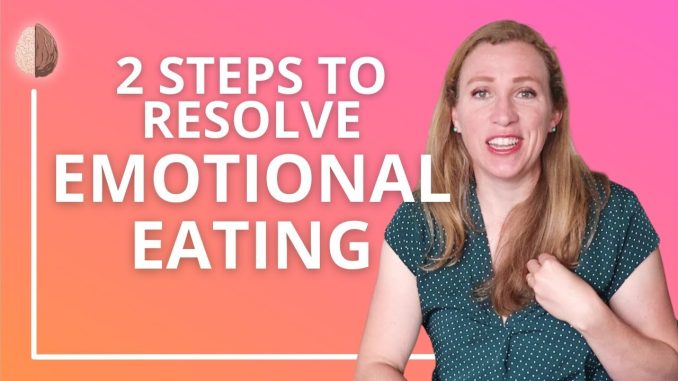
Emotional eating, often misunderstood as a simple lack of willpower, is a complex coping mechanism where individuals use food to manage or suppress feelings rather than to satisfy physical hunger. It’s a widespread phenomenon that transcends demographics, impacting everyone from busy executives to stay-at-home parents. In a world that often rewards constant productivity and the suppression of inconvenient emotions, turning to food for comfort can seem like a harmless, readily available solution. However, this pattern can lead to a cycle of guilt, weight gain, and diminished self-worth, ultimately hindering professional performance and personal well-being. Understanding the roots of emotional eating and developing healthier coping strategies are crucial steps toward breaking free from its grip.
At its core, emotional eating is about using food as a distraction or a way to numb uncomfortable feelings. These feelings can range from stress and anxiety to boredom, loneliness, sadness, or even overwhelming joy. Consider a high-pressure work environment where deadlines loom large and expectations are sky-high. An individual might reach for a sugary snack to temporarily alleviate the tension, creating a brief sense of calm or reward. This isn’t about physical hunger; it’s about seeking solace from the demands of the situation. Similarly, someone feeling isolated after a long day of remote work might find themselves mindlessly snacking, using the act of eating to fill a void that emotional connection would typically satisfy. The immediate gratification food provides can be incredibly powerful, but it’s fleeting, and the underlying emotional issues remain unaddressed.
Recognizing the triggers is the first critical step in addressing emotional eating. Triggers can be internal, such as specific emotions or thought patterns, or external, like particular situations, times of day, or even the presence of certain foods. For instance, an executive might notice they consistently overeat after a particularly challenging negotiation or a public speaking engagement. This suggests that stress or performance anxiety could be a significant trigger. Others might find themselves reaching for comfort food every evening after the children are in bed, indicating that boredom or a need for self-soothing at the end of a demanding day is at play. Keeping a food and mood journal can be an invaluable tool in identifying these patterns. This isn’t about calorie counting; it’s about documenting what, when, and how much you ate, alongside the emotions you were experiencing at that moment. Over time, distinct correlations will emerge, shedding light on the specific emotional landscapes that lead to overeating.
Once triggers are identified, the next phase involves developing alternative coping mechanisms that address the underlying emotional needs without involving food. This requires a conscious shift in behavior and a willingness to explore new ways of responding to discomfort. If stress is a trigger, for example, instead of heading for the pantry, one might consider a brisk walk, a few minutes of meditation, or even a short burst of intense exercise. These activities can effectively reduce stress hormones and promote a sense of well-being. For feelings of loneliness or boredom, reaching out to a friend, engaging in a hobby, or learning a new skill can provide meaningful engagement and alleviate the emotional void. The key is to find activities that genuinely soothe, distract, or fulfill, offering a sustainable alternative to the temporary comfort of food.
Mindful eating is another powerful strategy in disarming emotional eating. It involves bringing full awareness to the act of eating, paying attention to the taste, texture, smell, and even the sounds of your food. This practice encourages you to eat slowly, savor each bite, and truly listen to your body’s hunger and fullness cues. When you’re mindfully eating, it becomes much harder to overconsume simply out of habit or emotional distress. Before you even pick up a fork, take a moment to ask yourself, “Am I truly physically hungry, or am I seeking something else?” This pause creates a crucial space between impulse and action, allowing you to make a more conscious choice. Furthermore, practicing gratitude for your food and the nourishment it provides can transform the act of eating from a purely functional or emotional response into a more appreciative and satisfying experience.
Building resilience is also fundamental to long-term success in managing emotional eating. Life inevitably presents challenges and stressors, and the goal isn’t to eliminate all negative emotions, but rather to develop healthier ways of navigating them. This involves cultivating emotional intelligence – the ability to understand and manage your own emotions, and to recognize and influence the emotions of others. When you can identify your feelings accurately, you’re better equipped to choose appropriate responses that don’t involve food. Practicing self-compassion is equally vital. It’s easy to fall into a trap of self-criticism after an emotional eating episode, but this only perpetuates the cycle. Instead, treat yourself with the same kindness and understanding you would offer a friend. Acknowledge that emotional eating is a coping mechanism, not a personal failing, and commit to learning and growing from the experience.
Finally, seeking professional support can be immensely beneficial, particularly if emotional eating feels overwhelming or deeply ingrained. A therapist specializing in eating behaviors can provide personalized strategies, help uncover deeper emotional issues contributing to the pattern, and offer a safe space for processing feelings. Similarly, a registered dietitian can offer guidance on balanced nutrition and help distinguish between true hunger and emotional cravings. It’s important to remember that dealing with emotional eating is a journey, not a destination. There will be good days and challenging days, and setbacks are a natural part of the process. The objective is consistent progress, learning from each experience, and continuously refining your coping toolkit. By understanding the intricate connection between emotions and eating, and by proactively developing healthier responses, individuals can reclaim control over their relationship with food, leading to improved physical health, greater emotional well-being, and ultimately, a more fulfilling life both personally and professionally.